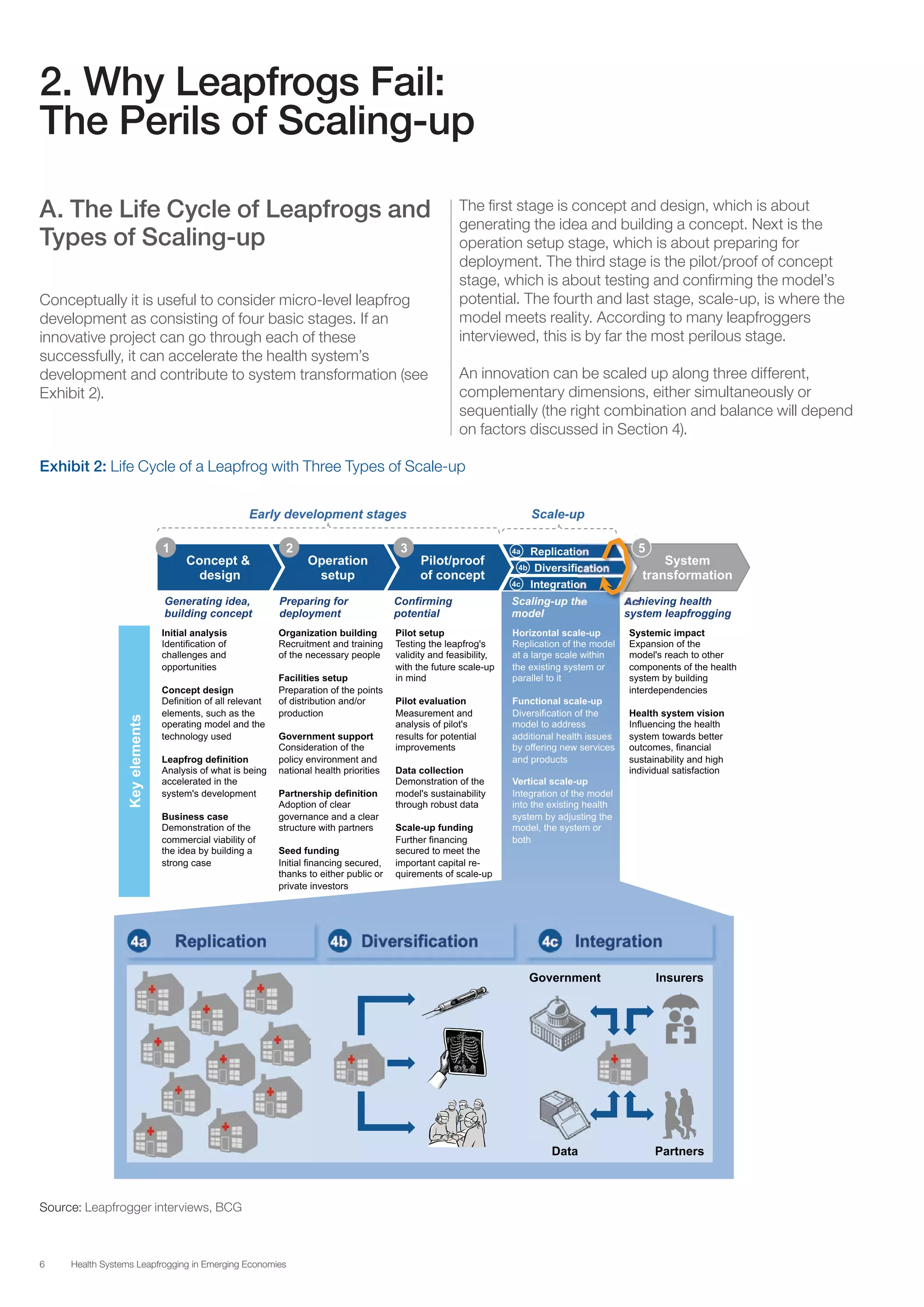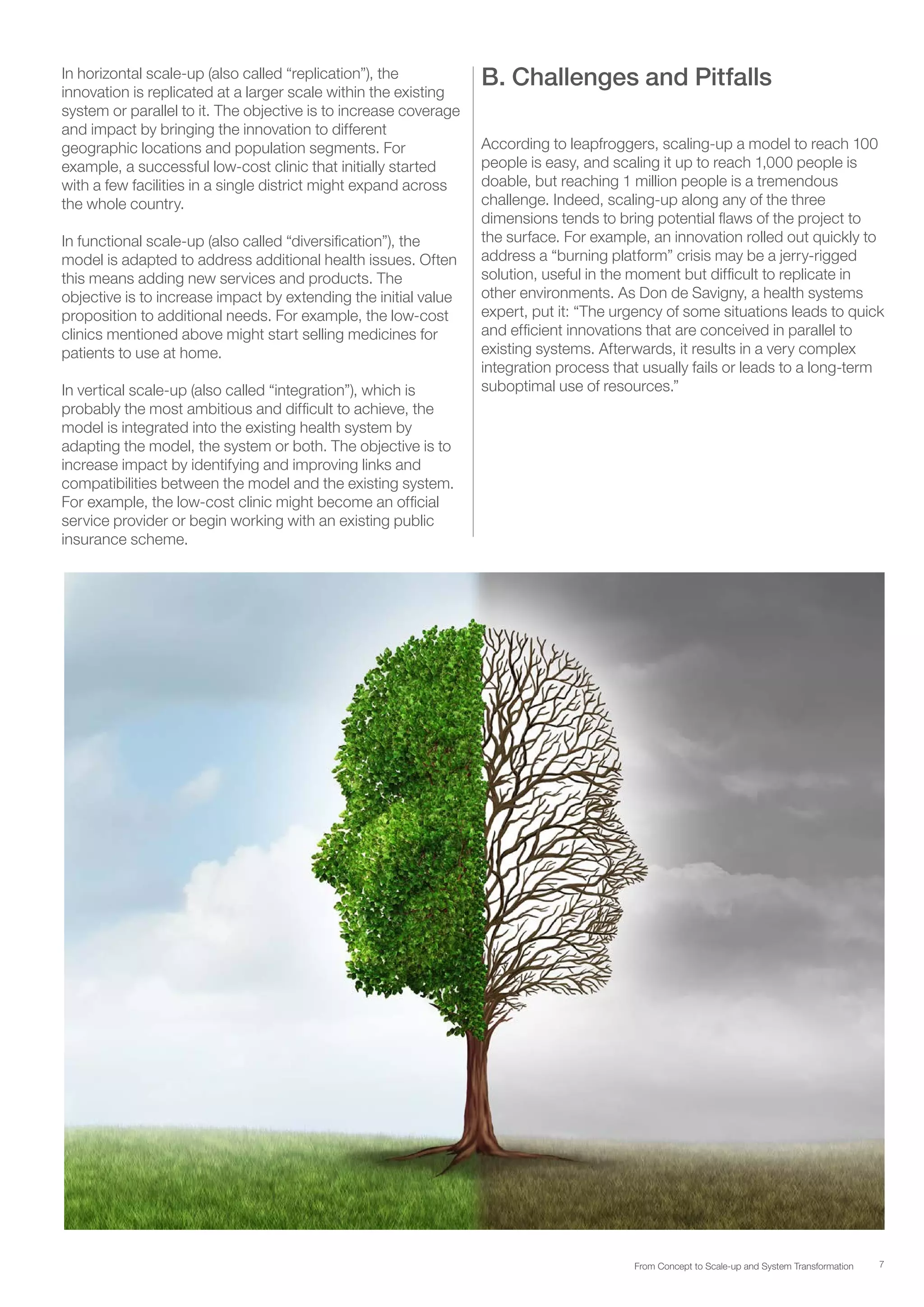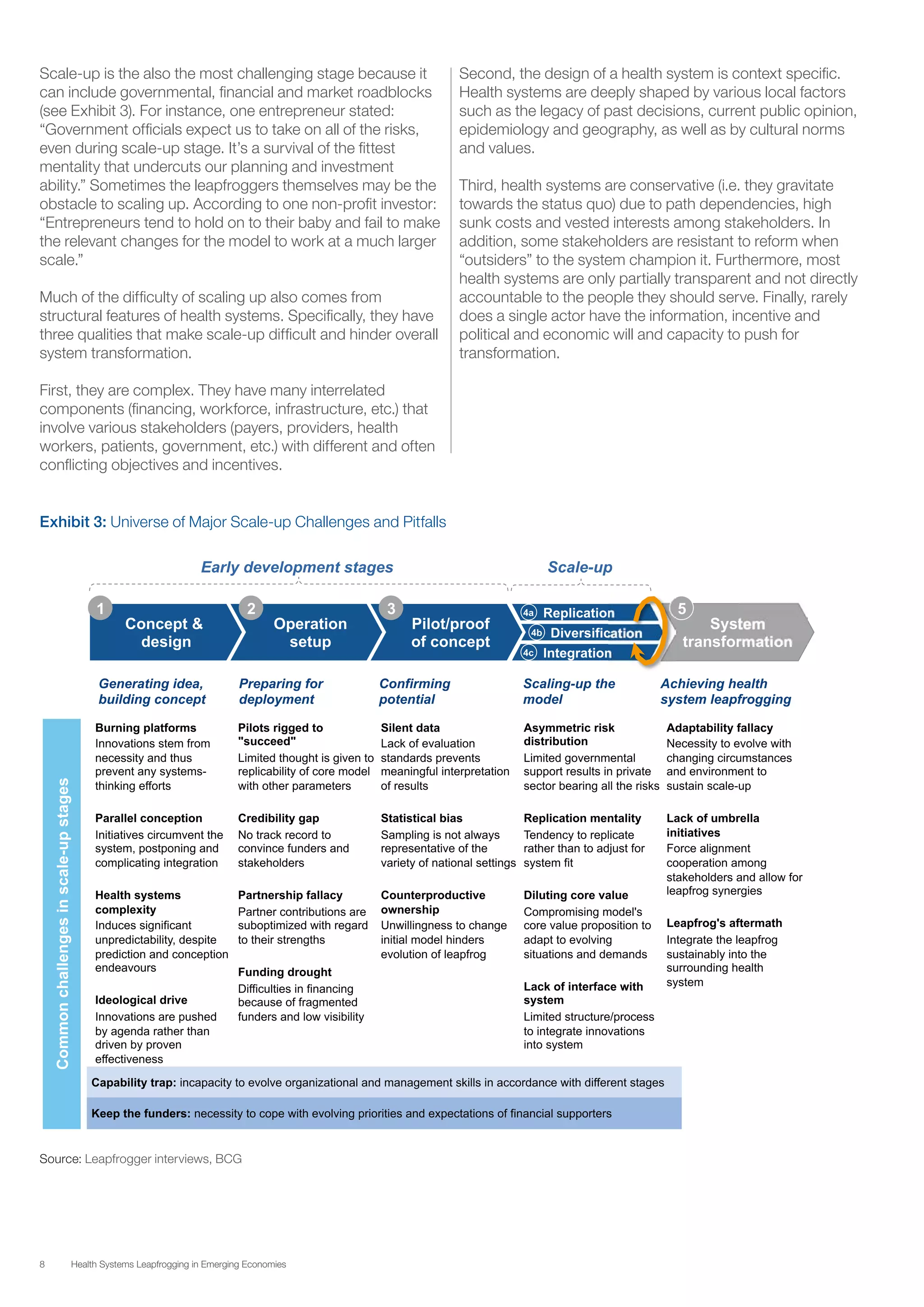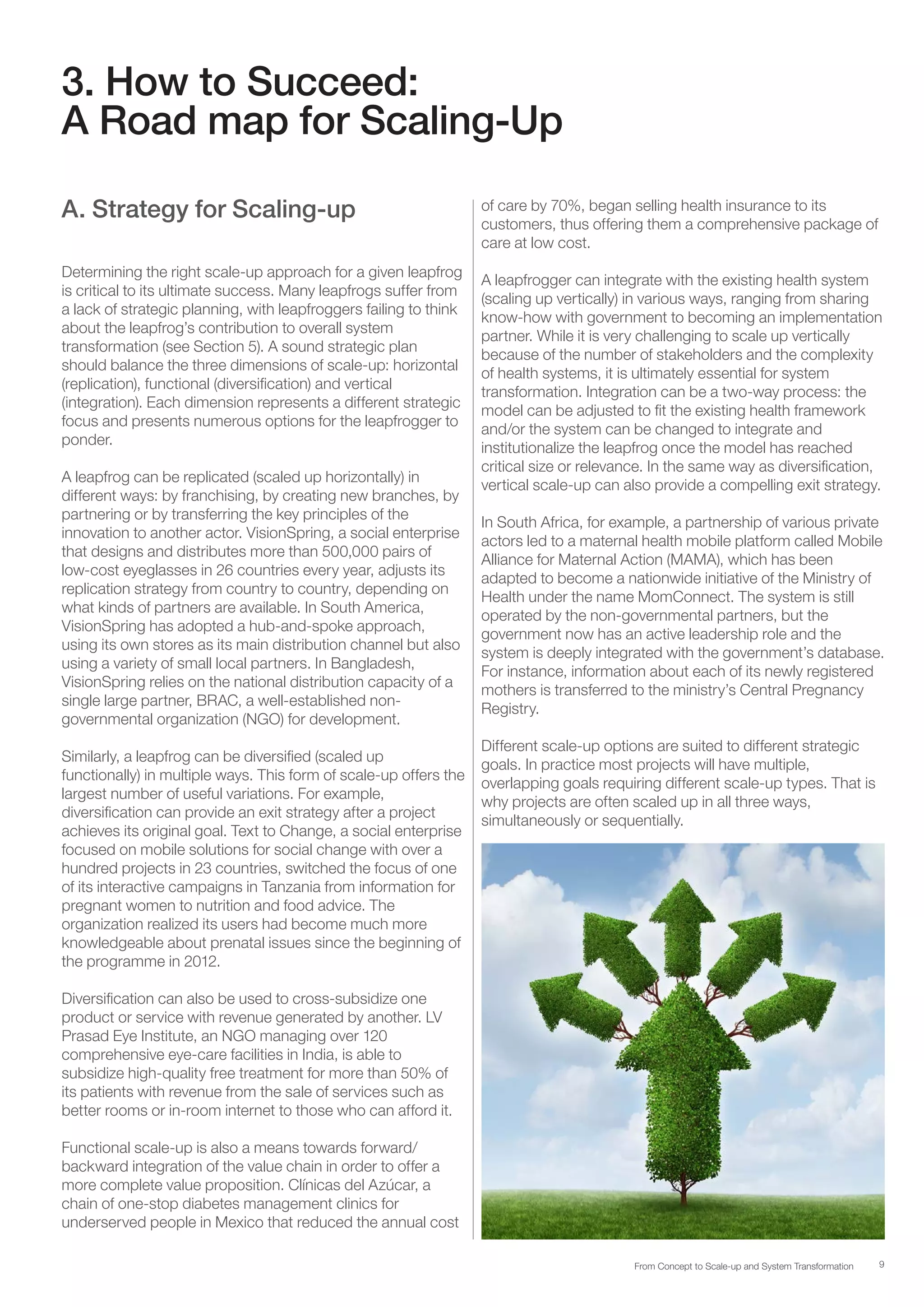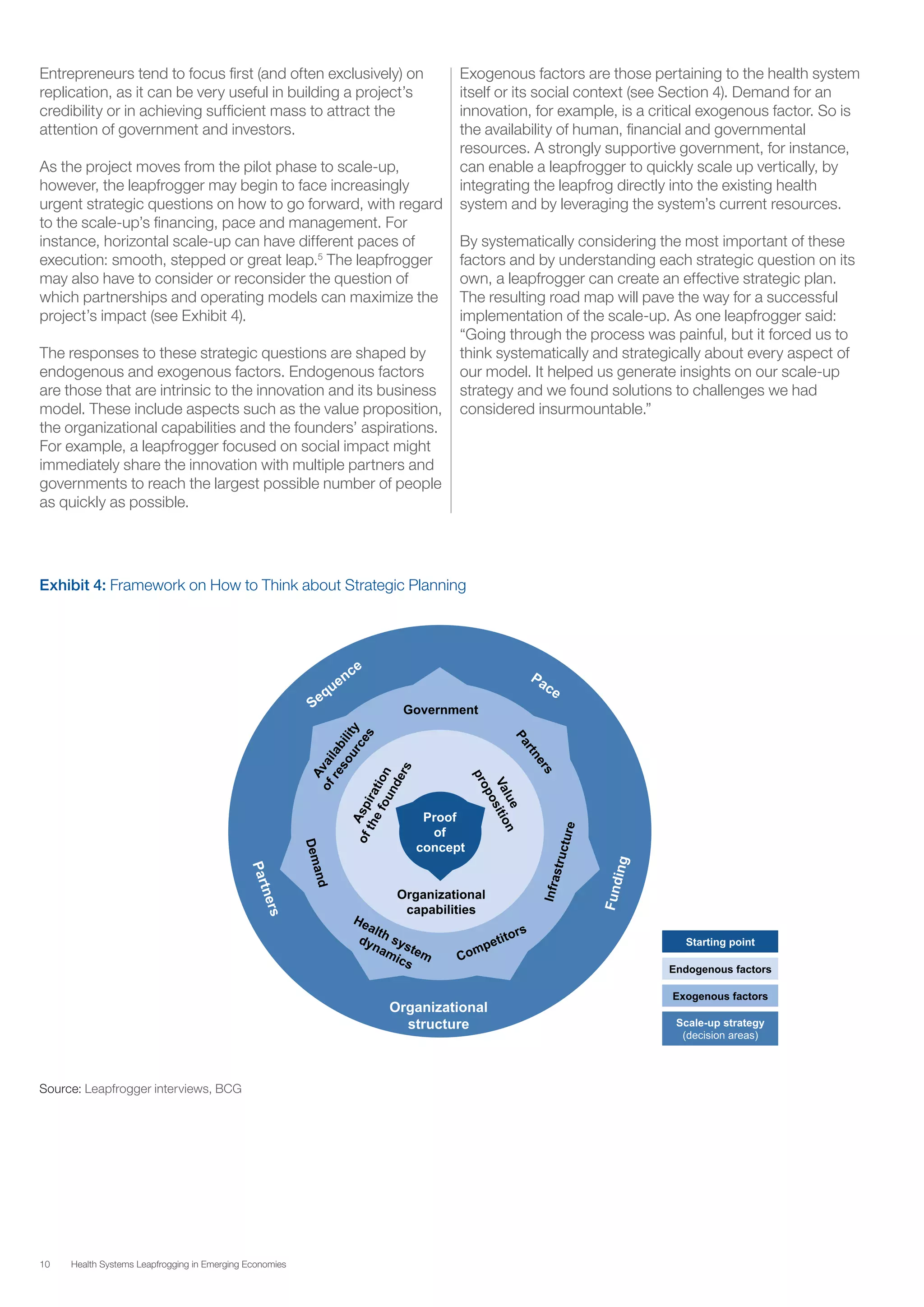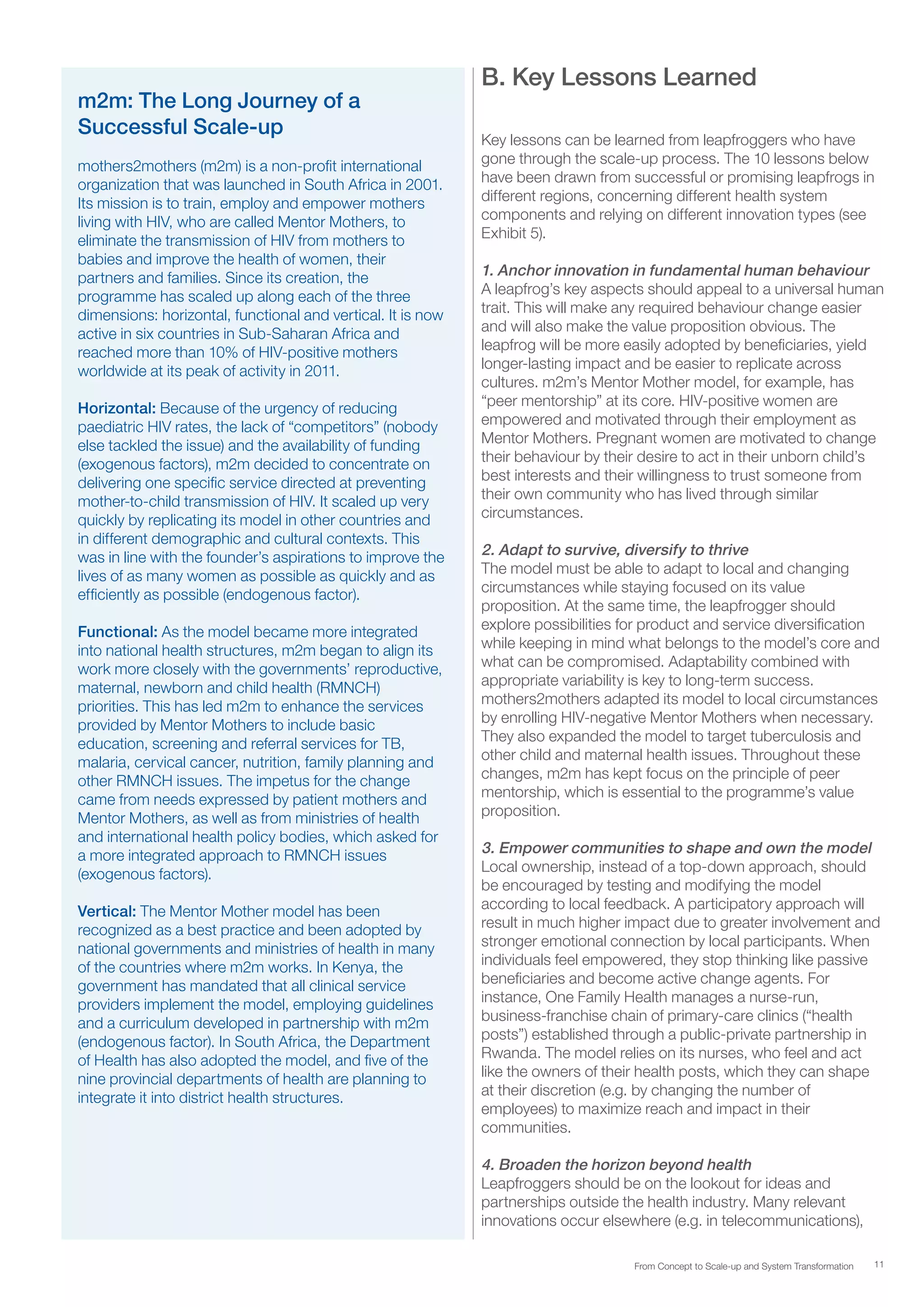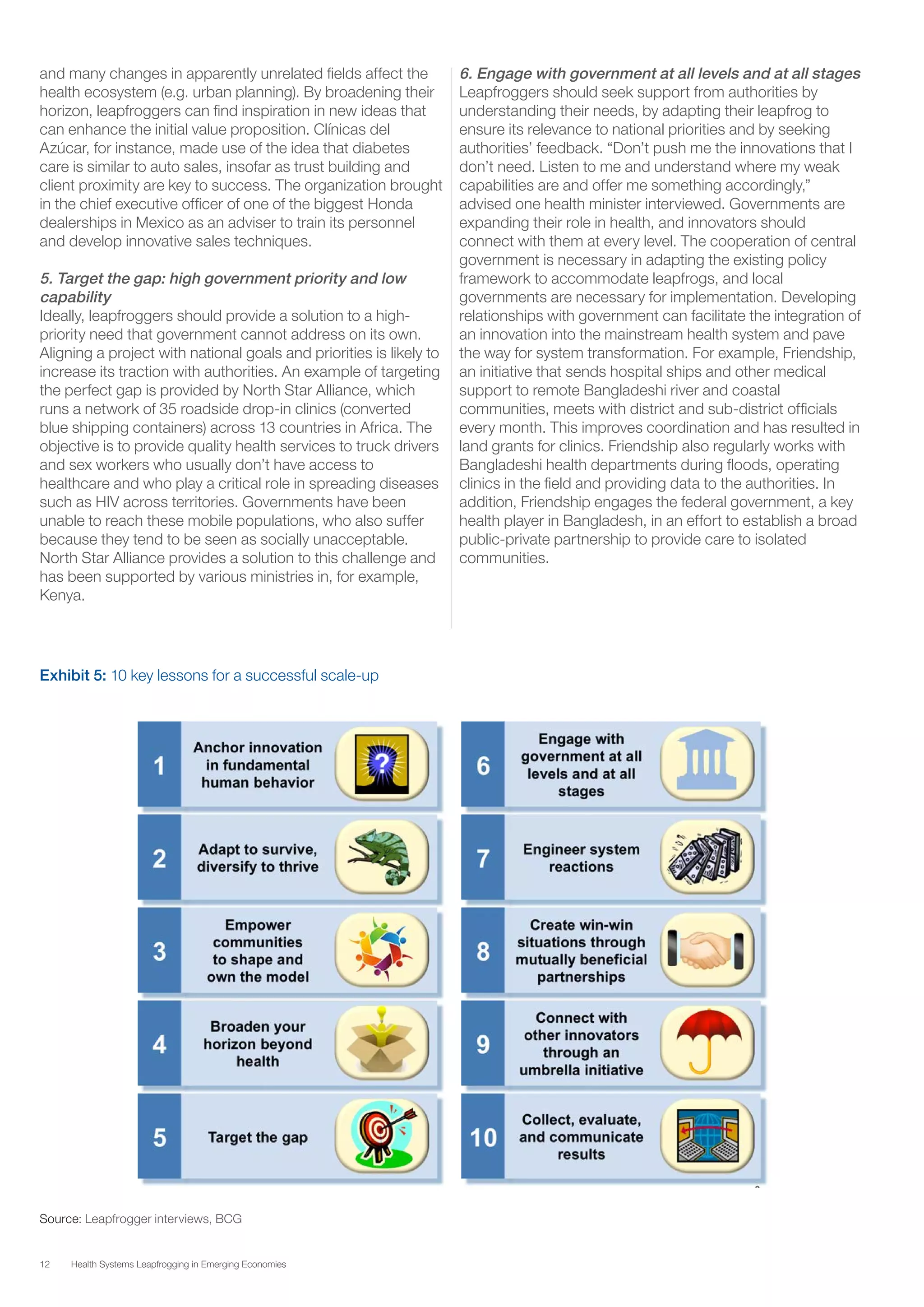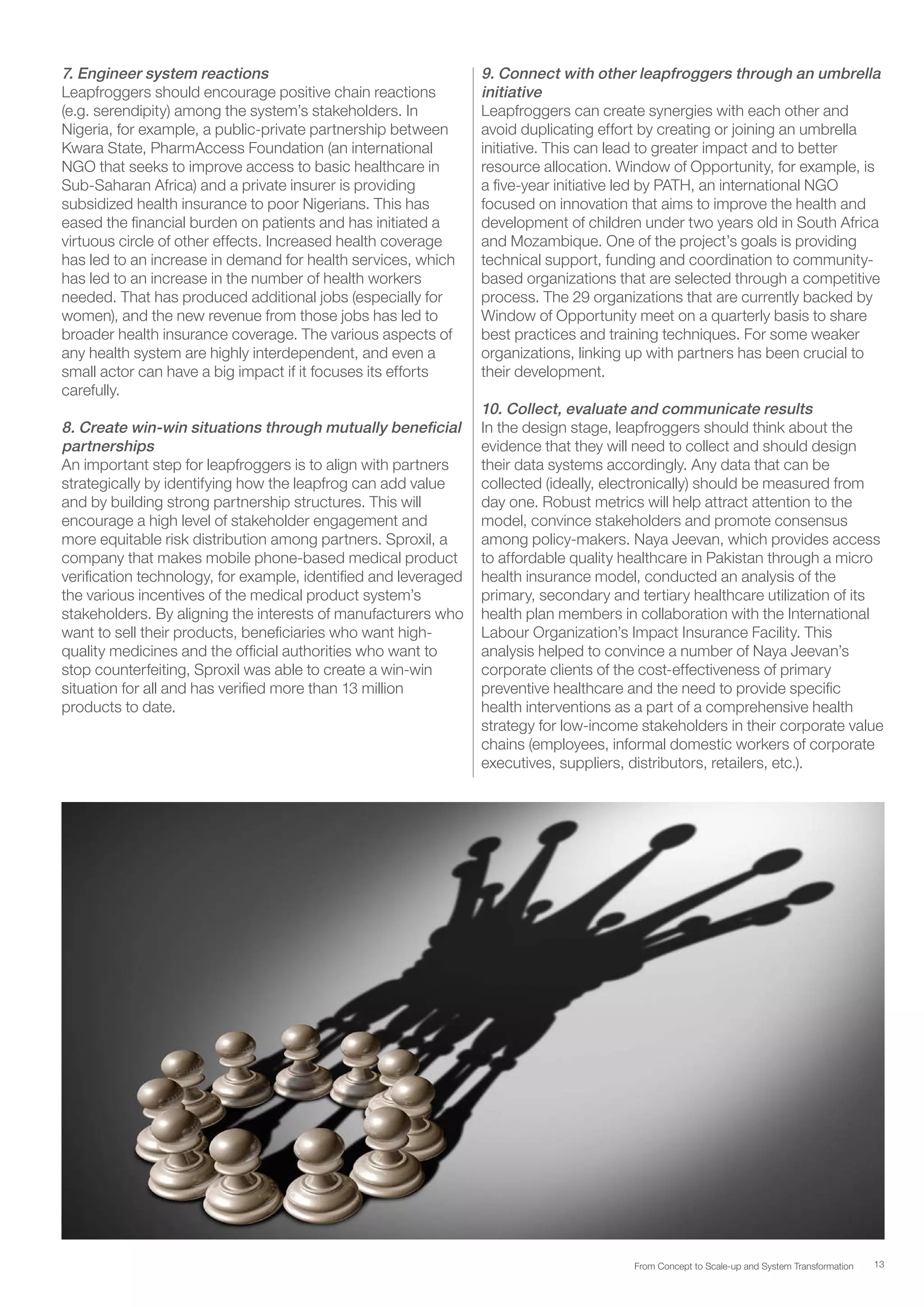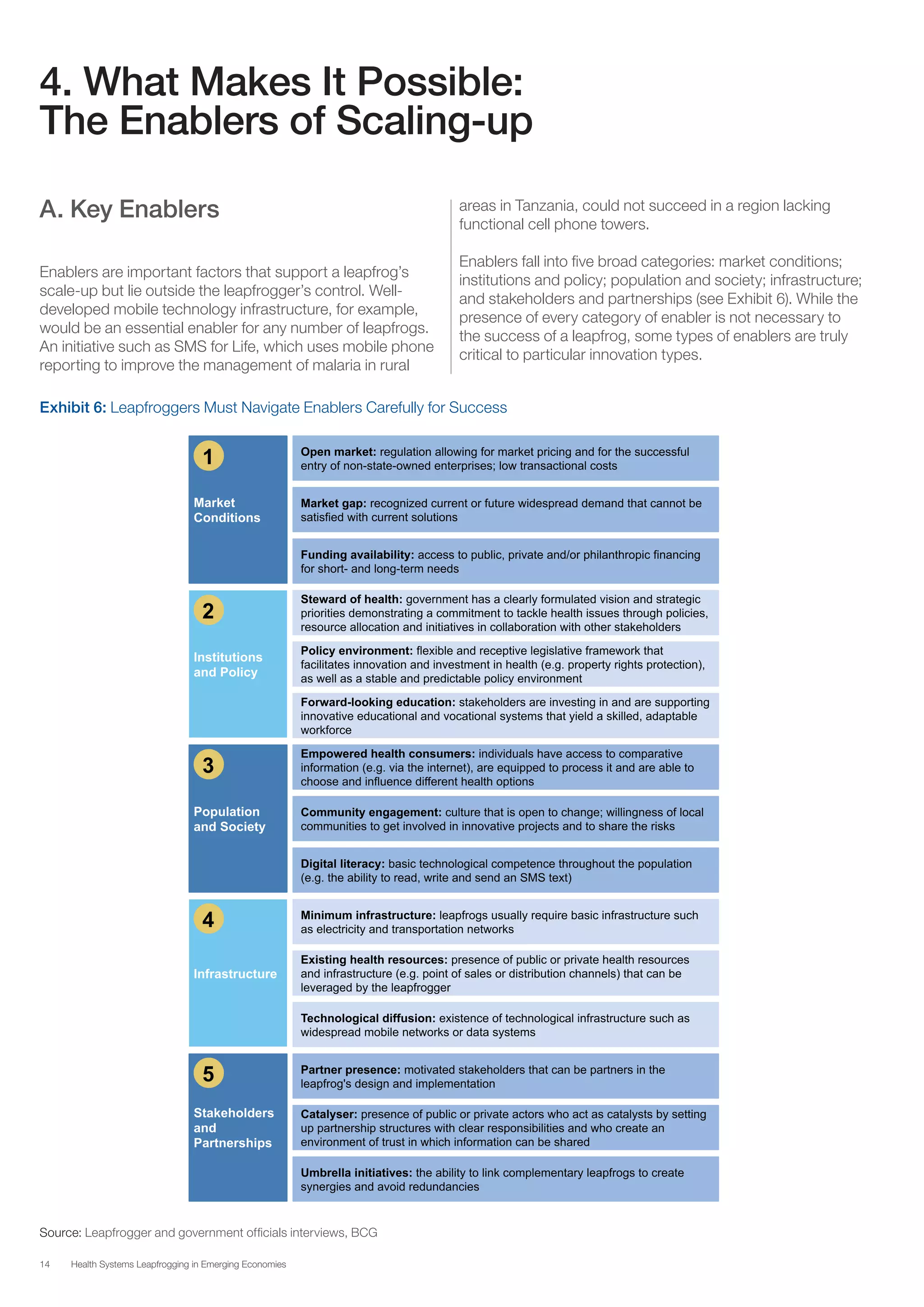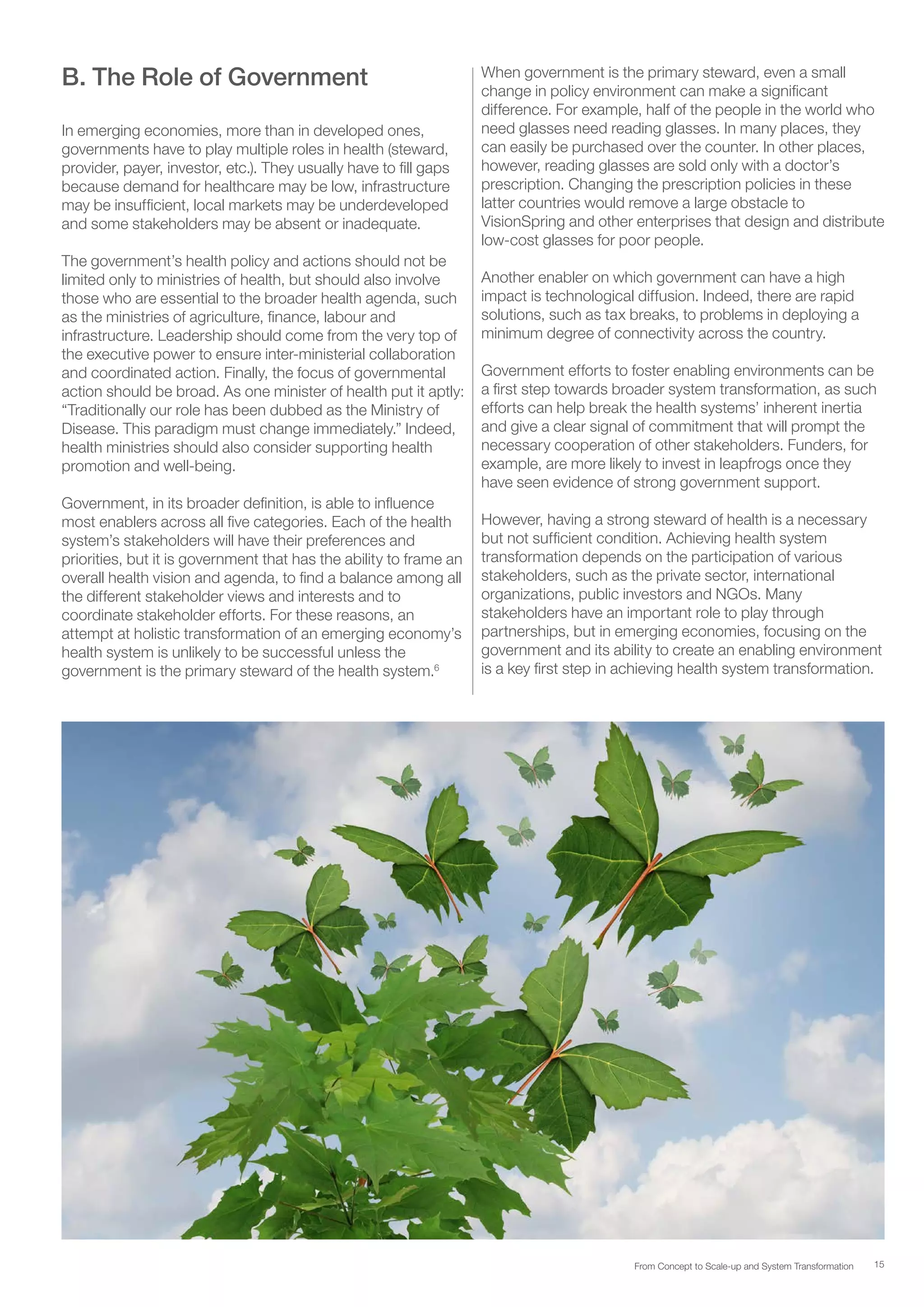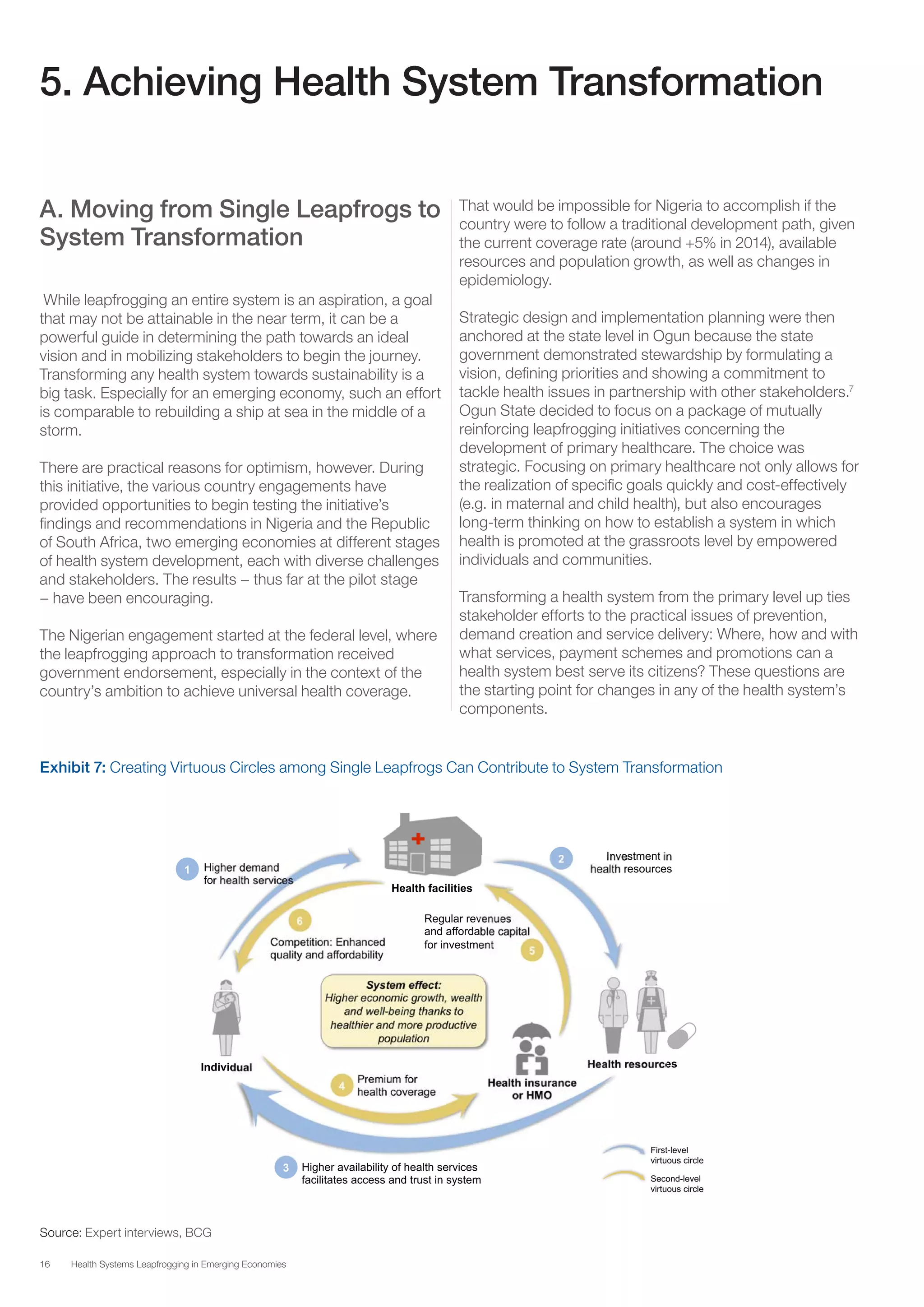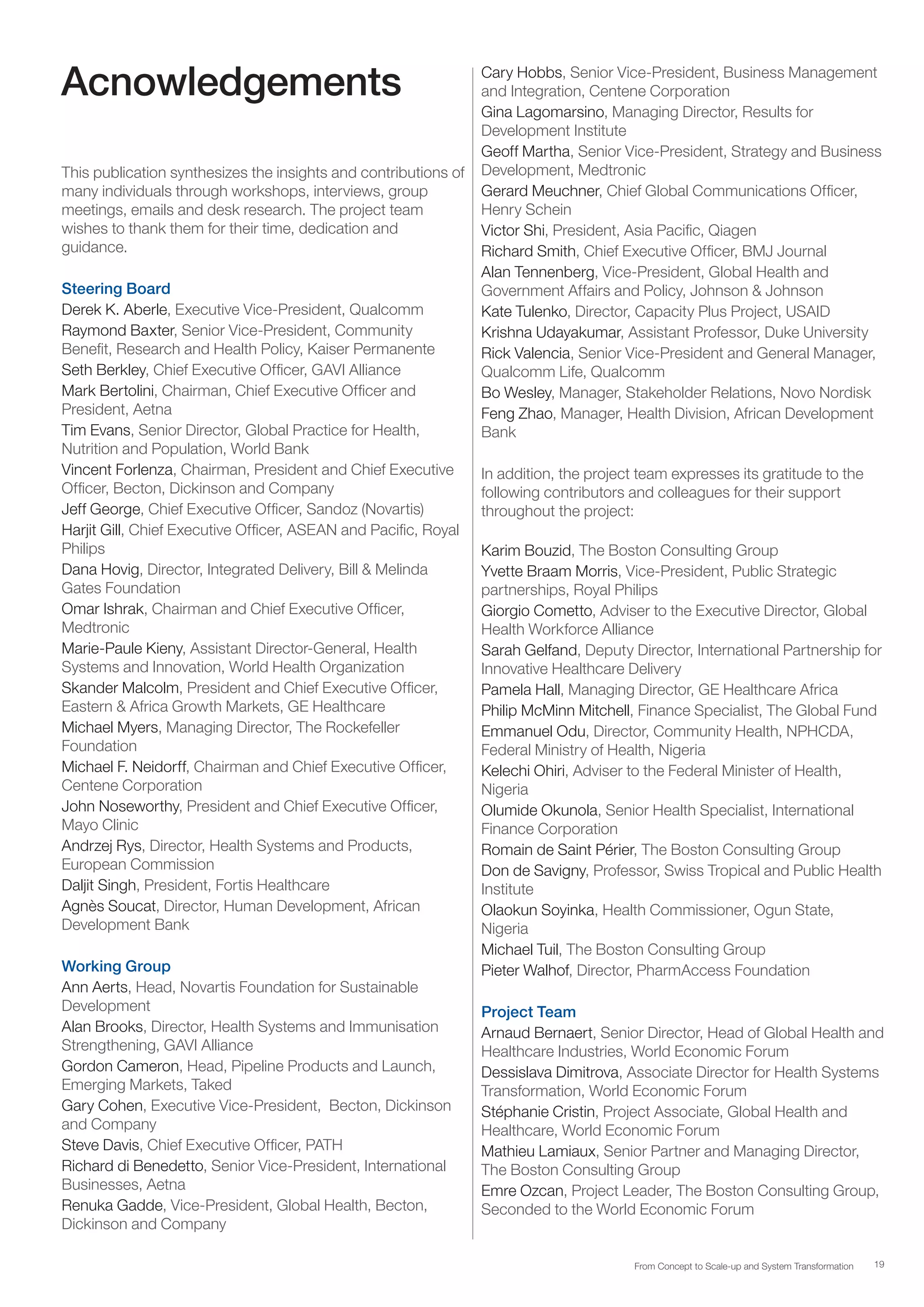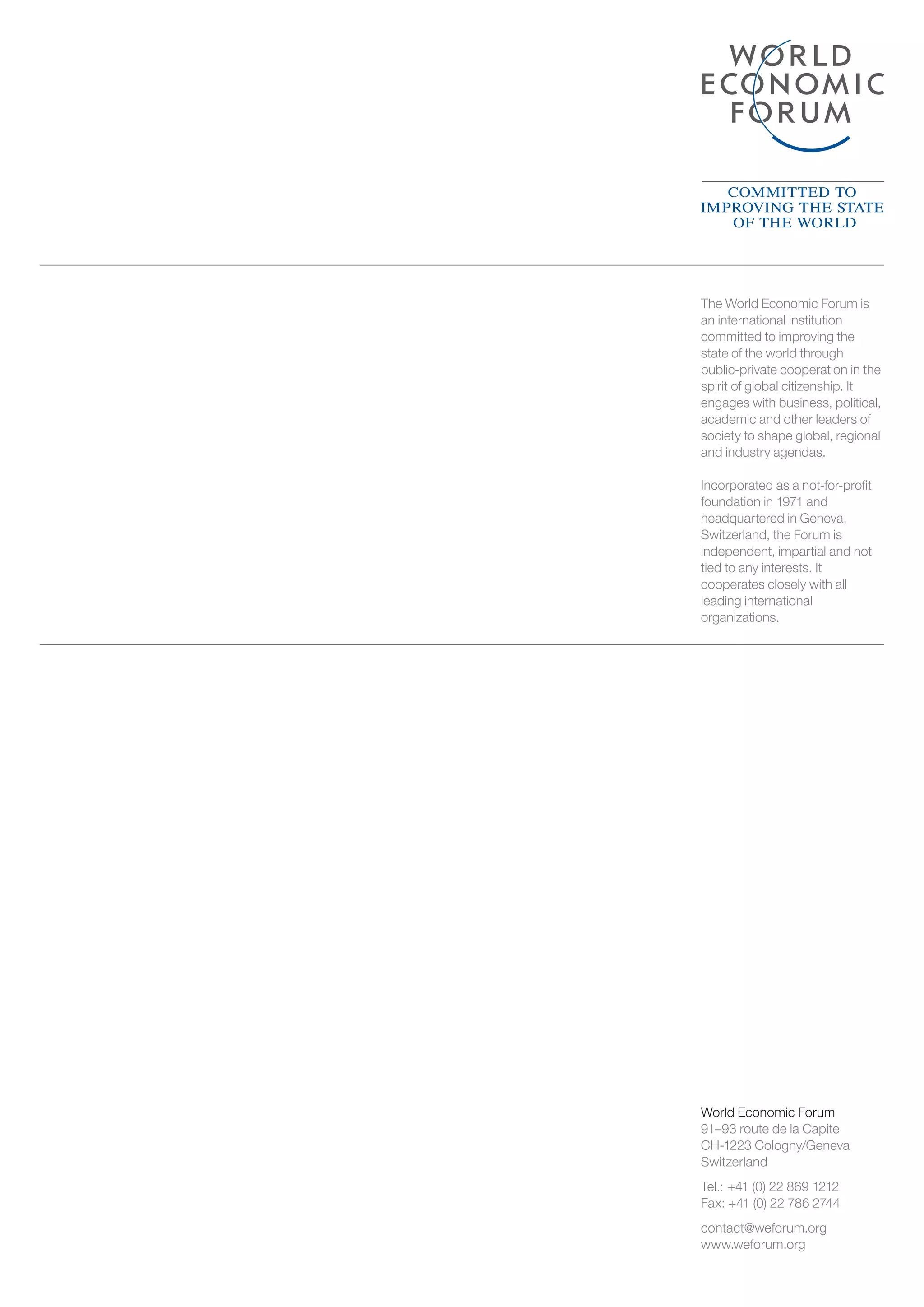The document discusses the initiative 'Health Systems Leapfrogging in Emerging Economies', which aims to enable these economies to achieve an ideal health system through innovative, cost-effective, and scalable solutions. It emphasizes the need for long-term visionary approaches and collaboration among stakeholders, particularly given the challenges of traditional health system development. The paper outlines strategies for scaling-up health innovations and the critical enablers necessary for achieving systemic transformation.
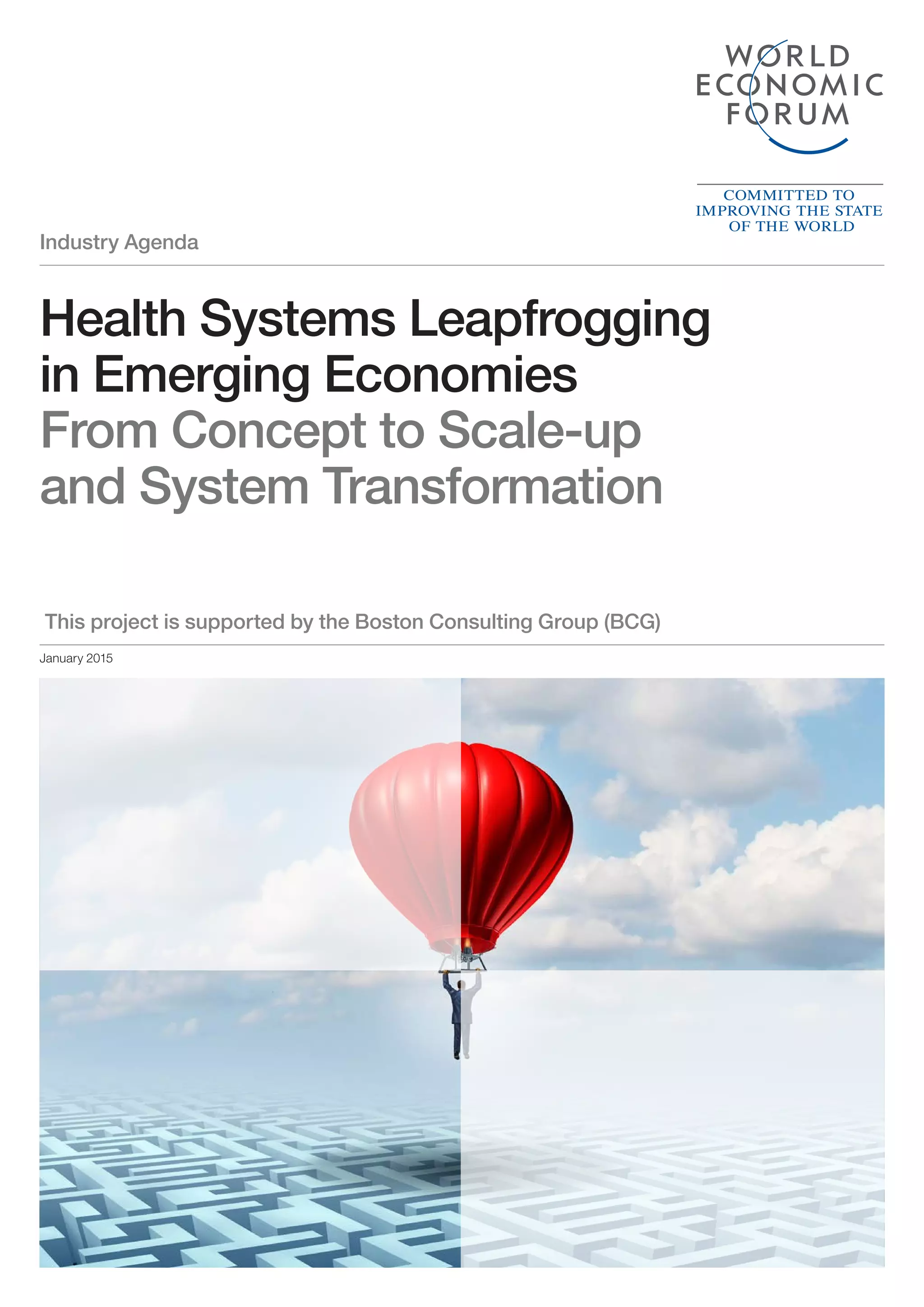


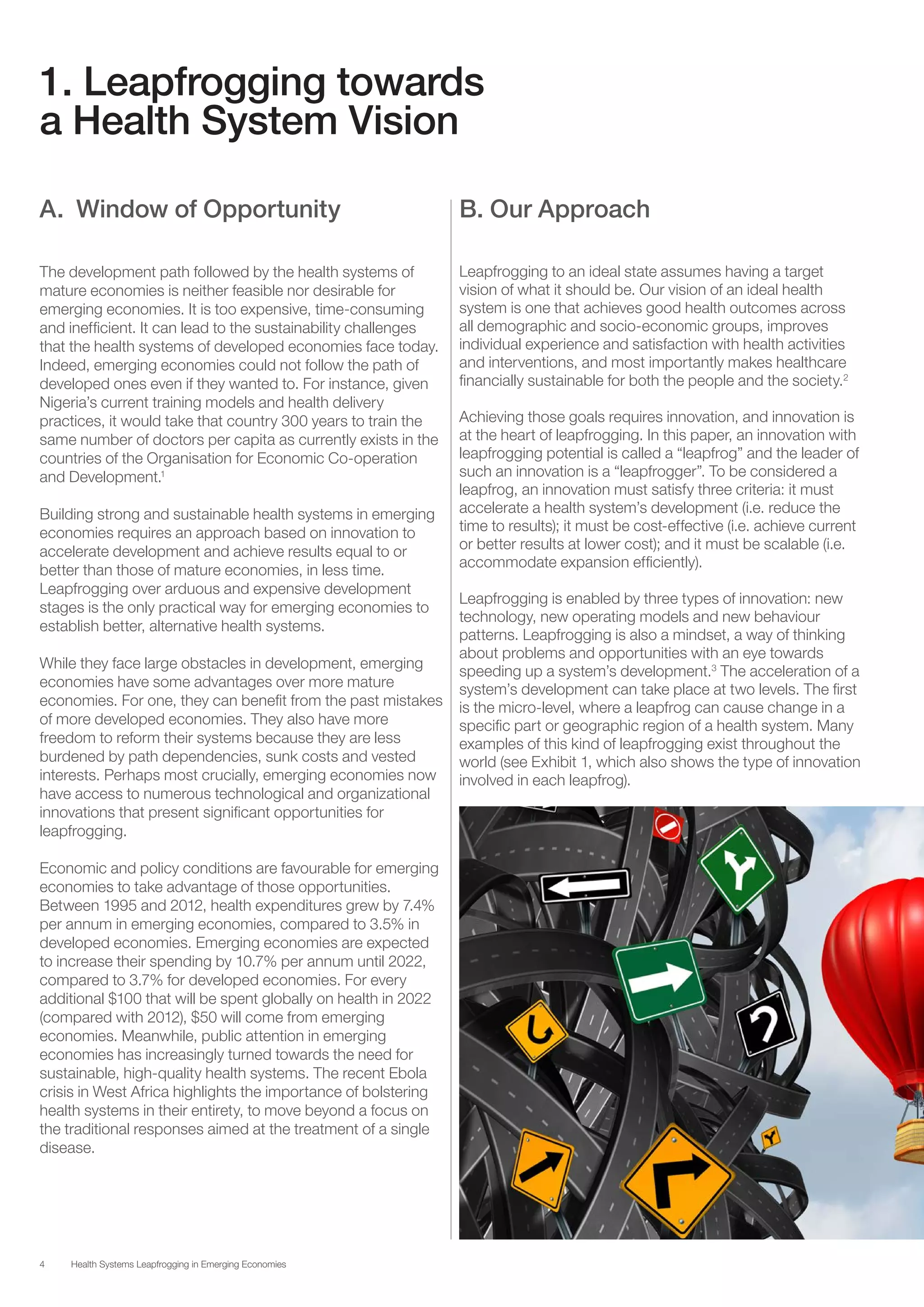
![5From Concept to Scale-up and System Transformation
Exhibit 1: Leapfrogging Matrix with Major Themes [from the 2014 Health Systems Leapfrogging Project Paper]
Source: Expert interviews, project partner organizations, desk research, BCG
The second level is the macro level, where leapfrogging can
lead to the transformation of an entire system. This is an
aspiration. No system has yet been completely transformed
through leapfrogging, but some have experienced large-
scale change using this approach. For instance, Ethiopia
has made large improvements in healthcare in recent years
– more than any other Sub-Saharan country – by
implementing an innovative 20-year strategy (Health
Extension Programme).4
It focuses on several aspects of the
health system, including bringing life-saving services and
products to the country’s largely rural population by training
more than 38,000 additional health workers. How to
systematize and reproduce that kind of large-scale change
is a big puzzle this initiative is working to solve.
Leapfrogs have distinct development phases. Our research
shows that many potential micro-level leapfrogs fail when
they reach the scale-up phase. These projects integrate
poorly into the health system and are uncoordinated with
other initiatives, limiting their impact. Although insufficient for
system transformation, getting the micro-level leapfrogs
right is a necessary condition. This paper examines the key
factors that can help both proven and emerging leapfrogs
scale up successfully.](https://image.slidesharecdn.com/wefhealthsystemsleapfroggingemergingeconomies-150125150338-conversion-gate02/75/Health-Systems-Leapfrogging-in-Emerging-Economies-From-Concept-to-Scale-up-and-System-Transformation-5-2048.jpg)
